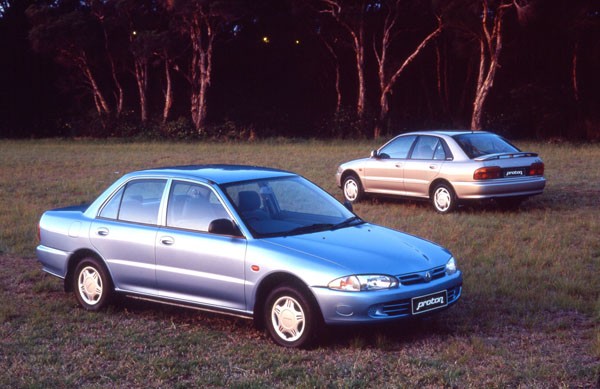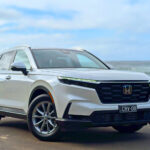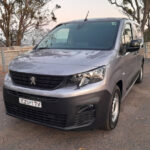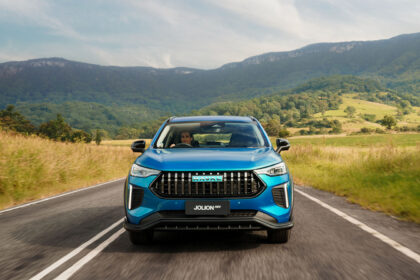The Proton Wira is a conventional small car with a transverse four-cylinder engine driving the front wheels. It’s most interesting feature is probably the fact that it comes from Malaysia.
Proton cars began as a joint venture between the Malaysian government and Mitsubishi Motors in Japan in the early 1980s. The intention was for Malaysia to build up a substantial heavy industry rather than rely mainly on agriculture.
The first cars used mainly Mitsubishi parts, but with each new model there is more Malaysian input. Mitsubishi influence is being phased out and the company is now partly owned by the Malaysian government and partly by private shareholders, with full private ownership the eventual aim.

Major parts which are still built by Mitsubishi include engines and gearboxes, a casting plant is nearing completion in Malaysia and eventually these parts will be made by Proton.
The Proton Wira is a larger than average small car and is sold as either a four-door sedan or five-door hatchback.
Both have attractive styling with a distinctive front end by courtesy of a raised section in the centre of the bonnet which leads down to a prominent grille with a Proton emblem.
The price leading Proton Wira 1.5 GL at $17,450 comes only as a sedan and only with five-speed manual transmission. It has a tilt-adjustable steering wheel, non-power steering, and an AM/FM radio-cassette with four speakers. The Wira GL has black bumper bars.
The next model up is the Wira 1.5 GLi, it is sold as a sedan or hatch at a price of $19,490. It has a five-speed manual or a three-speed automatic transmission. The GLi has power steering, central locking and body coloured bumpers.
The top of the line Wira XLi is priced at $21,490 and has a 1.6-litre engine. It comes with the choice of sedan or hatch bodies.
The XLi has a five-speed manual transmission but the automatic is a four-speed unit. Standard equipment above the GLi model’s includes wider wheels and tyres, rear-wheel disc brakes, power windows and mirrors, split rear seat backrests and a six-speaker stereo.
The 1.5-litre engine has a single overhead camshaft and three valves per cylinder. It puts out 66kW at 6000rpm.
The 1.6-litre engine still has a single overhead camshaft but uses four valves per cylinder. It’s output is 1.6 83kW at 6000rpm.
Suspension is independent by MacPherson struts at both the front and rear. A passive form of rear-wheel steering is built into the rear suspension for improved handling.
Braking is by front discs on all models, with either rear drums or discs, depending on the specification level of the car. No ABS brake system is being offered at this stage and neither is there an airbag option. Unusually in this class cruise control is offered as an option.
There is room in the front of the car for large adults. The back seat has slightly better than average legroom but could prove to have marginal headroom in the hatchback for tall passengers, the sedan is fine in this respect as its roofline extends further rearwards than the hatch’s.
The boot is large and easy to load in both the hatch and sedan. The rear seat backrest on both body types in the upmarket Wira XLi models can be folded down to increase carrying ability.
Ride comfort in the Wira is good and the car is reasonably quiet. While not as sophisticated as similar Japanese cars in this class it is nevertheless a long way ahead of small cars of ten years back in terms of refinement.
Handling is good, with predictable understeer, which is easily controlled, coming in at higher cornering rates.
The Proton Wira comes with an excellent three year, unlimited kilometre warranty.
TECHNICAL DETAILS PROTON WIRA 1.6XLi MANUAL SEDAN:
Length: 4360mm
Wheelbase: 2500mm
Width: 1690mm
Height: 1385mm
Turning circle: 10.2 metres
Kerb mass 1045kg
Fuel tank capacity: 50 litres
Towing ability: 1000kg with trailer brakes, 750kg without
GENERAL DETAILS/COSTS:
Heritage: Built by Proton in Malaysia, some components from Mitsubishi in Japan
Year current body appeared here: 1995
Expected date of replacement: N/A
Standard warranty: 36 months/unlimited km
Workmanship: Below average
Cost of major options:
Air-conditioning: $1594
Auto transmission: $1000 (three-speed) $1500 (four-speed)
Power steering: N/A, standard on GLi and XLi
Driver airbag: N/A
Antilock brakes: N/A
MECHANICAL SPECIFICATIONS:
Engine capacity: 1.597 litres
Engine configuration: transverse, four cylinders in line
Head design: SOHC four valves per cylinder
Fuel system: multipoint electronic fuel injection
Compression ratio: 10:1
Bore/stroke: 81.0 x 77.5mm
Claimed maximum power: 83kW at 6000rpm
Claimed maximum torque: 147Nm at 5000rpm
Driven wheels: front
Manual transmission: five-speed
Automatic transmission: four-speed (GLi has three-speed)
Final drive ratio: 4.322:1
Front suspension: MacPherson struts with stabiliser bar
Rear suspension: MacPherson struts with stabiliser bar
Steering: Rack and pinion
Front brakes: Ventilated disc
Rear brakes: Disc
PERFORMANCE/ECONOMY:
0-100km/h: 12.1
Standing 400 metres: n/a
Fuel consumption (A2877 test procedure) –
City cycle (L/100km):n/a
Highway cycle (L/100km): n/a












